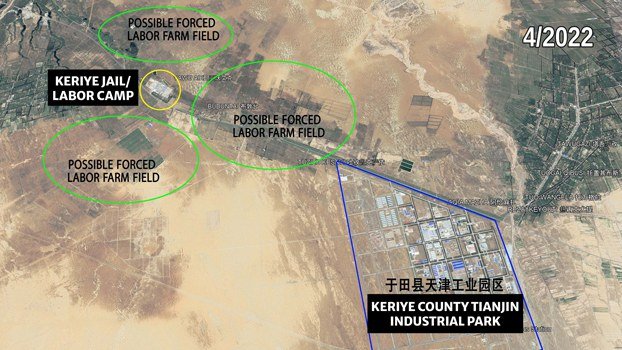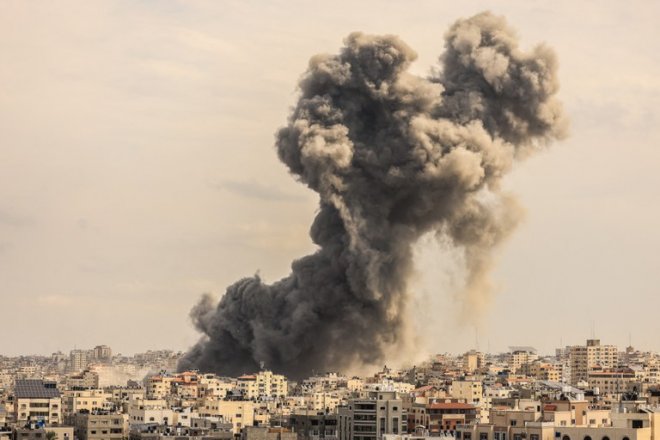Cyclone Mocha barrels toward Myanmar and Bangladesh
Potentially devastating Cyclone Mocha is expected to slam into the shared border region between Myanmar and Bangladesh on Sunday, putting hundreds of thousands of refugees and displaced at risk.Posting wind speeds of nearly 210 kilometers per hour (130 mph), the storm is similar in strength to Cyclone Nargis, which left nearly 140,000 people dead and missing in 2008, said Hla Tun, director of Myanmar’s Department of Meteorology and Hydrology.
“It’s very dangerous,” he told Radio Free Asia.
Cyclone Mocha, which formed Thursday in the southern Bay of Bengal, caused heavy rains and coastal surge in western Myanmar’s Rakhine state on Friday.
It is expected to affect areas stretching from Rakhine’s Kyauk Phyu township in the east to Cox’s Bazar in Bangladesh in the west – where hundreds of thousands of Rohingya refugees live in makeshift camps.
As Mocha barreled towards that coast, Bangladesh’s Meteorological Department on Friday night raised its danger level to eight on a scale of 10.
“We cannot stop the cyclone. But we are trying to reduce the extent of damage of the cyclone,” said A.B. Tajul Islam, chairman of the parliamentary standing committee at the Disaster Management Ministry, told the RFA-affiliated BenarNews on Friday evening.
“The government has been trying to relocate people to the cyclone shelters, but it is not possible to shift all of the people,” said Islam.

In Myanmar, the Irrawaddy Delta region and Rakhine coast can expect frequent strong winds and torrential downpours, while waves in the Bay of Bengal may reach heights of 4-5 meters (13-16 feet), weather officials said.
Evacuations have begun
Residents in the path of the storm have begun to evacuate.
 People shelter at a monastery in Sittwe town in Myanmar’s Rakhine state on Friday, May 12, 2023. Credit: AFP
People shelter at a monastery in Sittwe town in Myanmar’s Rakhine state on Friday, May 12, 2023. Credit: AFP
About 800 people from four villages have been sheltering in a local monastery since May 8, said Than Htay, a resident of Rakhine’s Pauk Taw township.
“When the storm hits, it will have been too late to run,” he said.
On Friday, the International Rescue Committee warned in a statement that "over 850,000 refugees risk losing their homes and livelihoods" if the cyclone hits Cox"s Bazar.
The United Nations Office for the Coordination of Humanitarian Affairs said it is "engaging with all relevant stakeholders to ensure timely and unimpeded access to those in need," noting that even before the cyclone hits, there are already about six million people in need of humanitarian assistance and 1.2 million people displaced across Rakhine state and Myanmar"s northwest.
“Of particular worry is the situation facing 232,100 people who are displaced across Rakhine,” it said in a flash update issued on Friday.
Inhabitants of Sittwe, the capital of the Rakhine state, and nearby villages are also evacuating, and state authorities and civil organizations have prepared emergency shelters, said Soe Min Aung, a resident of the city.
The Arakan Army, an ethnic Rakhine rebel group, is also evacuating residents from the coast and low-lying areas. The group’s spokesman, Khaing Thu Kha, told reporters that more than 10,000 people had been relocated from 21 villages over the last two days, and are being provided with food and medical assistance.
Rohingya at risk
Thousands of Rohingya displaced by a Myanmar military crackdown in 2017 and living in camps in Myanmar have not been evacuated, officials said.
More than 140,000 are sheltering in refugee camps in Rakhine’s Sittwe township.
These most vulnerable can only pray that the storm veers off course, said Kyaw Hla, a committee member of the Thae Chaung refugee camp in Rakhine state.
“If the storm actually hits here, we won"t be able to withstand it,” he said. “If that is the case, we will have to suffer. We will just have to try to survive all on our own.”
 Members of the Arakan Army, an ethnic Rakhine rebel group, evacuates residents from the coast and low-altitude areas in Rakhine state, Myanmar. Credit: Arakan Army
Members of the Arakan Army, an ethnic Rakhine rebel group, evacuates residents from the coast and low-altitude areas in Rakhine state, Myanmar. Credit: Arakan Army
Meanwhile, Bangladeshi government officials have instructed Rohingya refugees in Cox"s Bazar – where 740,000 live in camps – to shelter in religious schools and schools operated by the NGO community, residents of the camps told RFA.
But they acknowledged that there is little they can do to prepare for the brunt of the cyclone.
“We are very worried – if the storm hits here, there will be many negative effects,” said Ko Aung Myaing of the Kutupalong refugee camp.
Heavy rains will likely lead to landslides, destroying flimsy homes on the hillsides, he said. “The tents we have are not strong enough.”
Mohammed Mizanur Rahman, Bangladesh’s refugee relief and repatriation commissioner, told BenarNews that there were risks of landslides at some of the refugee camps.
“We have identified 500 families living at the camps in Teknaf who face the risk of landslides,” he said.
Officials had not yet started to evacuate people from Cox"s Bazar on Friday night, but were planning to start evacuations early on Saturday morning. At least 2,000 people had been evacuated from Saint Martin"s island and had arrived in Teknaf, a sub-district of Cox"s Bazar district, officials said.
Muhammad Shaheen Imran, the Cox’s Bazar deputy commissioner told BenarNews that the government readied 576 cyclone shelters in the area that could accommodate up to 500,000 people.
 People gather at the beach in Cox’s Bazar, Bangladesh, on Friday, May 12, 2023, ahead of the landfall of cyclone Mocha. Credit: AFP
People gather at the beach in Cox’s Bazar, Bangladesh, on Friday, May 12, 2023, ahead of the landfall of cyclone Mocha. Credit: AFP
Disaster risk management specialist Abdul Latif Khan told BenarNews that Mocha was likely to cause up to two meters (seven feet) of tidal surge in Teknaf, Cox’s Bazar.
‘Passing the days with anxiety’
Mohammad Alam, chairman of the Teknaf Leda Development Committee, told BenarNews that the authorities had been making public announcements to make people aware of the dangers of Mocha.
“The people living on hills at risky places have been asked to go to safer places. Pregnant women and children have been advised to take shelter at nearby schools and distribution centers inside the camps,” Alam said.
“We are passing the days with anxiety,” he said.
Translated by Myo Min Aung. Edited by Joshua Lipes and Malcolm Foster.
[圖擷取自網路,如有疑問請私訊]
|
本篇 |
不想錯過? 請追蹤FB專頁! |
| 喜歡這篇嗎?快分享吧! |
相關文章
AsianNewsCast























